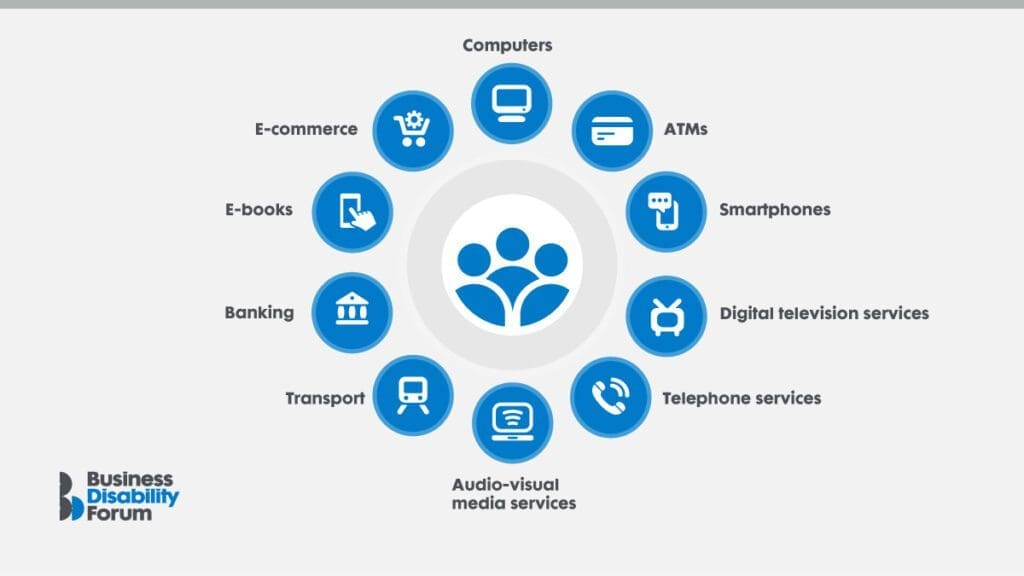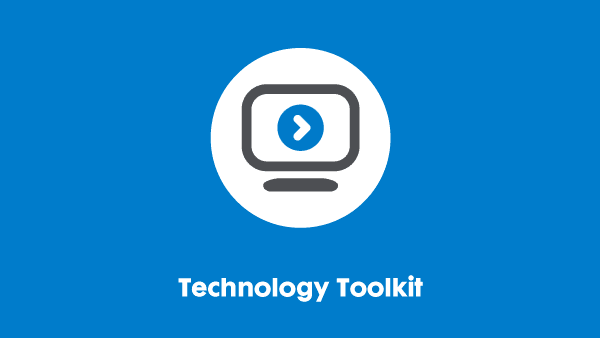Last updated: 18 October 2024
The European Accessibility Act (EAA) – What businesses need to know and do
What is the EAA?
The European Accessibility Act (EAA) is a pivotal legal directive designed to enhance accessibility by establishing common accessibility rules throughout the EU. Its aim is to ensure that digital products and services are accessible to all individuals, particularly those with disabilities. While the Act’s primary focus is on the EU, its influence is expected to reach beyond the Union’s borders, setting a benchmark for accessibility standards globally. Non-EU organisations that sell products or services in the EU will be required to meet the accessibility standards set out by the Union. Compliance will not only reduce legal risk but open opportunities for these businesses to reach wider audiences too.
Understanding disability
The EAA uses the definition of disability outlined in the UN Convention on the Rights of Persons with Disabilities (UN CRPD), which has been ratified by the EU and most of its Member States. According to the UN CRPD, persons with disabilities “include those who have a long-term physical, mental, intellectual or sensory impairments which in interaction with various barriers may hinder their full and effective participation in society on an equal basis with others”. In the EU alone, there are an estimated 135 million people who have a disability or are affected by disability in some way, according to World Health Organisation.
What does accessibility mean?
Accessibility is a broad concept that involves eliminating barriers to the use of products, services, and infrastructures for people with disabilities. This means both designing new products and services with accessibility in mind and removing existing obstacles that make them difficult to use.
The EAA emphasises a ‘design for all’ or universal design approach. This approach aims to create ‘products, environments, programmes and services to be usable by all people, to the greatest extent possible, without the need for adaptation or specialised design’. However, it’s important to note that if a product or service, even if designed inclusively, remains inaccessible, further adjustments or accommodations may still be required under National or Union law.
What does the EAA do?
The EAA represents a significant step towards a more accessible Europe, offering benefits to both businesses and individuals while laying out a clear timeline for its phased implementation and enforcement.
Benefits for businesses:
- Unified accessibility rules: The EAA introduces common accessibility standards across the EU, helping businesses streamline their operations and reduce compliance costs.
- Easier cross-border trading: With standardised accessibility requirements, businesses can compete in new markets throughout the EU. This reduces the complexity of navigating different national regulations and opens more opportunities for trade.
- Expanded market opportunities: Businesses that invest in accessible products and services stand to gain a competitive advantage. As consumers with disabilities seek accessible options, companies that meet these needs can increase their customer base.
Benefits for persons with disabilities:
- Increased accessibility: The EAA ensures a wider range of accessible products and services in the market. This means that individuals with disabilities and the elderly will find it easier to use everyday items and access essential services.
- Competitive pricing: As the market for accessible products and services expands, competition will likely drive down prices, making them more affordable.
- Reduced barriers: The EAA aims to lower obstacles in key areas such as transport, education, and employment. This will allow individuals with disabilities to access opportunities more easily.
- Job creation: The demand for accessibility expertise is expected to rise, creating new job opportunities in sectors focused on inclusive design and compliance.
Timeline and implementation
- June 2019: The EAA was officially published by the European Union.
- June 28, 2022: The directive was formally adopted as a regulation by EU Member States.
- June 28, 2025: This is the key date by which all Member States must begin applying the EAA’s accessibility measures.
- 2030: By this year, services must stop using inaccessible products that were in use before June 28, 2025. Additionally, Member States will start reporting on the Act’s impact and implementation.

Enforcement of the EAA
Enforcement of the EAA is managed at the national level. Each EU Member State is responsible for implementing the Act’s requirements, including determining penalties for noncompliance and designating enforcement bodies. The EAA outlines that penalties must be “effective, proportionate, and dissuasive” to ensure compliance.
Additionally, the Act requires Member States to establish practices for consumers and organisations to report noncompliance. This can be done through the courts or through designated enforcement bodies in each country. Both public and private organisations also have the right to pursue legal action or file complaints regarding breaches of the EAA, ensuring that there are multiple ways for addressing accessibility issues.
What digital products and services does the EAA cover?
The EAA focuses on a range of products and services that are crucial for individuals with disabilities.
The EAA covers:
- Computers and operating systems: Ensuring that digital technology is usable for people with various disabilities.
- ATMs, ticketing, and check-in machines: Making financial transactions and travel processes more accessible.
- Smartphones: Improving the usability of mobile devices to accommodate different accessibility needs.
- TV equipment related to digital television services: Enhancing accessibility features for television viewing.
- Telephony services and related equipment: Ensuring that telephone services and associated hardware are accessible.
- Access to audio-visual media services: This includes television broadcasts and related consumer equipment, promoting inclusivity in media consumption.
- Services related to passenger transport: Covering air, bus, rail, and waterborne transport services to improve accessibility in travel.
- Banking services: Ensuring that banking activities are accessible, including online and in-person services.
- E-books: Making digital reading materials accessible to all users.
- E-commerce: Ensuring that online shopping platforms are usable for individuals with disabilities.

How to prepare for the EAA
How should businesses prepare?
The EAA applies to all business operating within European Union Member States. This includes businesses based outside the EU, such as those in the UK, that export products to EU countries. Global companies must also ensure that their products and services comply with the accessibility requirements. Importantly, the EAA applies to both public and private sector organisations.
With the EAA set to come into effect in June 2025, businesses have a window of time to prepare for compliance. The lead time reflects the complex and challenging nature of achieving full accessibility, and organisations should start preparing now to ensure they are ready for the act’s requirements. Here are key steps businesses should take:
- Assess product and service coverage: Determine if products and services fall under the EAA and identify any specific functional accessibility requirements they must meet.
- Conduct accessibility audits: Review and audit digital content, websites, platforms, and marketing materials for accessibility.
- Develop an accessibility strategy: Create a comprehensive accessibility strategy with an actionable plan. This strategy should outline how the organisation will meet EAA requirements and address any identified issues.
- Implement accessibility training: Train staff on accessibility standards and requirements. Ensure that all relevant employees understand how to create and maintain accessible products and services. For more information, see our resources, ‘Introduction to accessibility standards and training’ and ‘Accessibility training: A guide to available resources.’
- Use accessibility testing tools: Use accessibility testing software to regularly evaluate and ensure the accessibility of digital content and services. For more information, see our resource, ‘Accessibility testing.’
- Provide documentation: Consider providing a Voluntary Product Accessibility Template (VPAT), a form which helps buyers evaluate how well products and services meet accessibility standards. Or use a conformance report to document the level of conformance to the EAA. For more information, see our resource, ‘How to measure and report on accessibility.’
- Regular evaluation and accountability: Continuously evaluate products and services against your accessibility action plan.
- Embed accessibility in procurement: For businesses involved in importing products into the EU, ensure that accessibility requirements are considered during the procurement process, ensuring that imported products meet EAA standards. For more information, see our resources, ‘Why does inclusive technology procurement matter’ and ‘Inclusive technology procurement – Where to start’.
How should designers and manufacturers of digital products and services prepare?
For designers and manufacturers, it’s important to note that while the EAA does not specify exact technical solutions for accessibility, it encourages innovation. However, the act may lead to the development of more detailed standards or technical measures where necessary.
How should digital service providers prepare?
Service providers must be aware that they are responsible for accessibility even if services are provided by subcontractors. It is crucial to ensure that any digital agencies or subcontractors understand and comply with EAA requirements. Staff training is also essential to help them effectively communicate and support accessibility features.
How should importers prepare?
Importers need to ensure that products from non-EU countries comply with the EAA. This might require establishing assessment processes to verify compliance before products enter the EU market.
Exceptions
Lastly, there are exceptions. If meeting the EAA requirements would impose a “disproportionate burden” on a business, and if it can demonstrate that compliance is not reasonably possible, an exception may apply. Additionally, microenterprises are exempt from these requirements.
If you require this content in a different format, contact enquiries@businessdisabilityforum.org.uk.
© This resource and the information contained therein are subject to copyright and remain the property of the Business Disability Forum. They are for reference only and must not be copied or distributed without prior permission.

